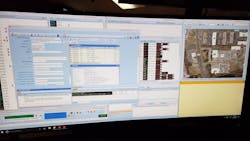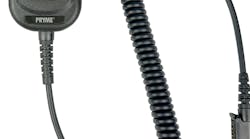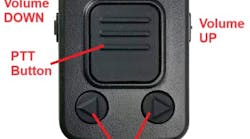Every day, it seems a new PSA announces a jurisdiction’s overhaul plan. These are major undertakings costing millions of dollars which stresses the importance of understanding the basics of what needs to change and how to move forward with a project of this size.
Coverage and capacity are the two factors driving a lot of the need for change according to Mike Leonard, Mid-Atlantic Territory VP, Motorola. The third piece is interoperability. “[P25] is a more refined standard that also has driven a lot of need to migrate. The fourth piece is obsolescence and systems going out of support. Vendors can no longer get the parts. The life cycle is 15 or 20 years, but sometimes they are obsolete in three. Some legacy systems sold in the late 90s can no longer be supported.”
Brian Melcer, program manager, Mission Critical Partners (MCP) adds reliability to the list. He states that many of MCP’s clients are required to migrate to a new system because their current frequency band had to be vacated or they were unable to get additional frequencies.
Listing all the components of a radio system can make eyes glaze over. It can seem overwhelming. Broken down to some basic elements it can be better understood. “There are a few components,” explains Leonard. “The actual tower sites. The engineering team will look at what the coverage needs are. In-building is an important aspect that has come up over the years. Then, the microwave backhaul links all of those sites together.” This transports the traffic (voice, video and data) from point to point linking the sites. “An antennae network,” he continues. “At a minimum, you’d have a receive and a transmit side, and combiners. A generator and UPS (uninterruptable power supply). A system core which is the brains. A lot of IP equipment—servers, routers—that controls the network. A base station with your channels that are programmed with the appropriate frequencies. The dispatch console and all the subscriber units, the mobile and portable radios. Those are the key components of a radio system.”
Putting communities first
Anne Arundel County (Md.) which has been moving their system into the future since 2015—described by then County Executive Steve Schuh as, “the largest public safety infrastructure upgrade in its history.” Step one was to upgrade their aging 911 system. Launched in January 2018, both the police and fire departments transitioned to a new computer aided dispatch (CAD) system, Infor EnRoute. “The system upgraded was from the early 1990s,” says Emily Meadows, Anne Arundel Public Safety Portfolio Manager, Project Manager, CAD upgrade project. Calling it, “the dark ages.”
Not in a vacuum
One of the components of an upgrade Anne Arundel recognized was the need to look beyond just the radio. “When you are overhauling a dispatch radio system you are only worried about radios,” explains Margaret Moran, Director, Public Sector Group, Infor. However, she explains, a system upgrade needs to be about more than the radio by including the entire telecommunications. “It has to have functionality to integrate with CAD. Closed systems have to be opened up. Not just the radio system, it has to have total network infrastructure.” Leonard agrees, explaining how Motorola’s Command Central Software Suite plays into this total system upgrade model. “We’re looking at a lot of enhanced features and capabilities beyond push-to-talk. Geo-location is a big part of that. We’re embedding the ability for GPS technology, text messaging. We’re really doubling down on these enhanced features, data capabilities in our Next Generation solutions.”
“You’re not just getting a system that manages a call,” Moran states. “911 Dispatch used to be an island of itself. Today to make things work right it has to be a nucleus from when you put the call in to the end. You have to plan that core and not just each piece individually, not how one piece feeds each other.”
Power of partnership
Agency to agency partnership is important as well. “You can save a lot of money and give smaller agencies the ability to have state of the art equipment,” Moran says. The main infrastructure components, tower site facilities, physical radio equipment at the tower site and connectivity network are all areas where working with other agencies can make it more cost effective. “We’ve seen agencies share tower sites and connectivities and have great success in doing that,” Melcer says.
There are a number of challenges, a major one is time. “It’s frowned upon that it takes three years to put something in,” says Moran. “If you’re starting from scratch, you have to put things in place, do your due diligence on what you’re missing and how far you need to dig in.”
Chris Kelly, VP, Director of Wireless Services, MCP agrees, “These tend to be long projects. You might spend a year putting the requirements together, finding funding and going through the procurement. You might implement for two to three years. Whenever we’re digging up the issues, it’s hard for users to grasp it might be three years down the road. Usually a 911 Director is in charge, but they have their day job making sure everything is up and running. One reason they hire consultants is because they don’t have time to devote to a project like this.” Utilizing a consultant, such as MCP helps agencies leap this hurdle. “Our main clients, the small counties, don’t have the time,” Kelly states. “We’re there to be staff augmentation, to be the project manager and the subject experts, to make sure what the county signed up for they are getting.”
The future of radio
Moran sees infrastructure changing including satellite replacing big radio antennas. Melcer believes there will be more partnerships, too. Due to the expense and the time involved, radio system overhauls need to be carefully constructed with an eye towards the future. Stakeholders from government managers to line staff need to be involved and have a say in the design and implementation. Additionally, businesses assisting agencies in the upgrades need to be focused on what matters most: citizen and first responder safety.







